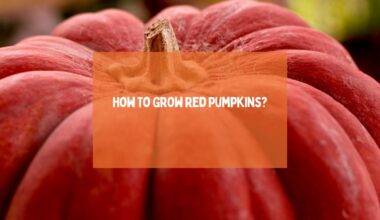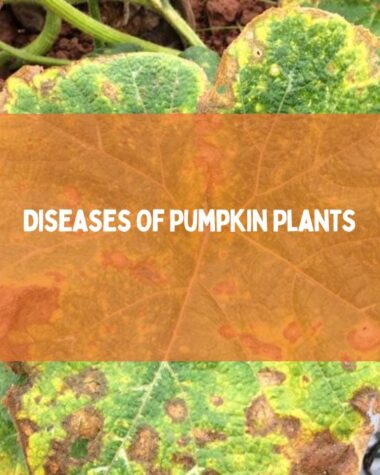Pumpkins, those festive orange globes that adorn our porches and fill our pies during the fall, can take your gardening game to the next level. Maximizing your pumpkin harvest requires more than just a green thumb, it’s about knowing which fertilizer techniques work best for these nutrient-loving plants.
In this blog, I’ll explore the importance of fertilizer for pumpkins. I shall also discuss various types to choose from and highlight expert tips on maximizing your pumpkin yield.
Let’s start exploring our main topic.
Understanding The Importance Of Fertilizer For Pumpkins
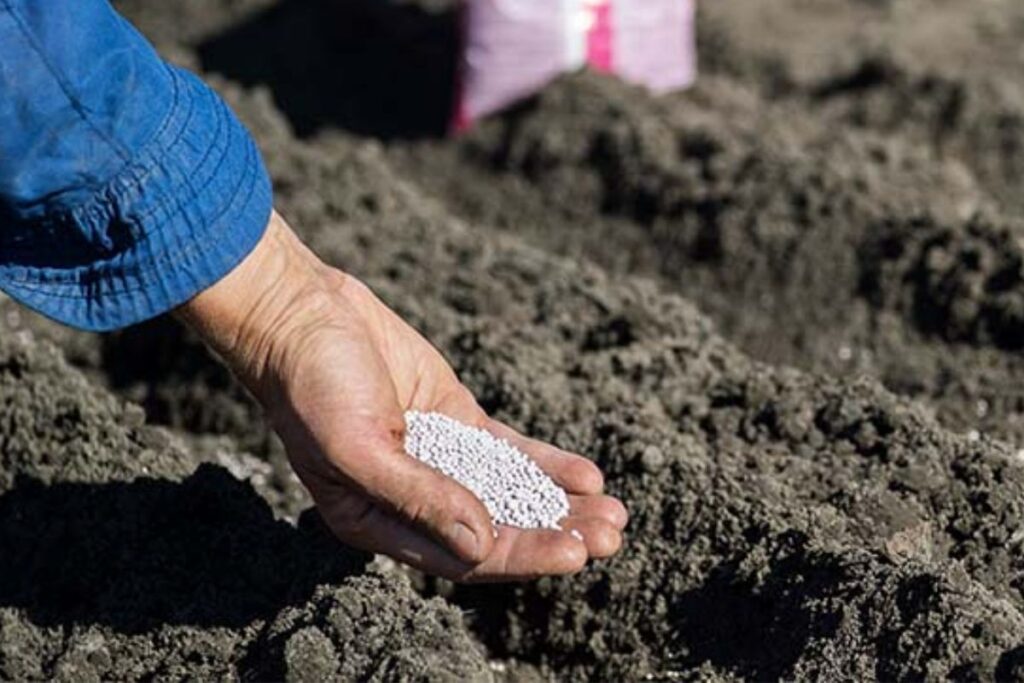
Proper fertilization is vital for maximizing pumpkin growth and yield, as pumpkins have specific nutrient requirements that must be met.
Nutrient Requirements For Optimal Pumpkin Growth
Growing pumpkins to their maximum potential requires a keen understanding of the essential nutrients needed for optimal growth.
Nitrogen (N), phosphorus (P), and potassium (K) are the three primary macro-nutrients that play crucial roles in various aspects of pumpkin development.
While nitrogen promotes lush vegetative growth, phosphorus is vital for root development and flower production.
Knowing the appropriate ratios of these key nutrients is critical for achieving a bountiful pumpkin harvest. A balanced fertilizer containing equal parts of N-P-K is generally recommended for most crops; however, pumpkins benefit from slightly higher levels of phosphorus and potassium than nitrogen.
A common recommendation by horticultural experts is using a fertilizer ratio of 5-10-10 or 10-20-20 at planting time.
It’s worth noting that nutrient requirements may vary depending on factors like soil type and growing conditions in your area. Conducting a soil test before planting can provide valuable insights into existing fertility levels while helping you customize your fertilization plan accordingly.
Benefits Of Proper Fertilization for Pumpkins
Proper fertilization is essential for maximizing your pumpkin harvest, as it provides the necessary nutrients required for optimal plant growth. When pumpkins receive enough of the right nutrients, they are better equipped to resist pests and diseases, resulting in a healthier and more abundant crop.
Using high-quality fertilizers also increases the yield of your pumpkin patch by stimulating healthy stem growth, ensuring adequate sun exposure, optimizing plant spacing, and increasing resistance to environmental stresses such as extreme weather conditions.
Common Nutrient Deficiencies In Pumpkin Plants
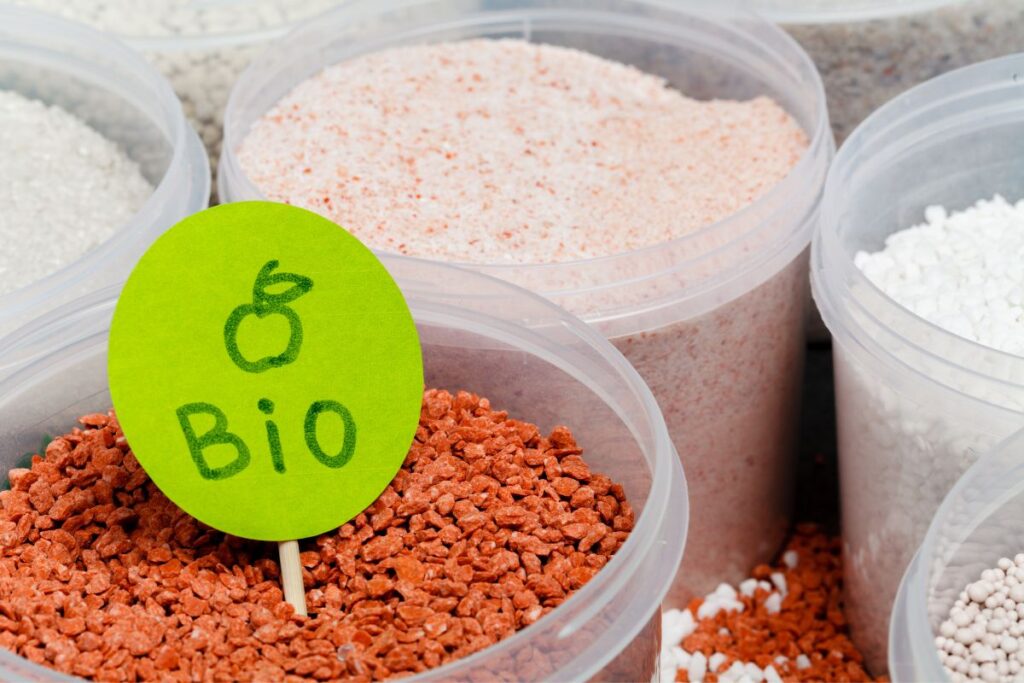
Pumpkins require a variety of nutrients to grow and thrive. Without proper fertilization, they may experience nutrient deficiencies that can affect their growth and yield. Here are some common nutrient deficiencies that may occur in pumpkin plants:
- Nitrogen deficiency: This can cause the yellowing of leaves and stunted growth.
- Phosphorus deficiency: This can result in slow growth, weak stems, and dark green leaves.
- Potassium deficiency: This can lead to yellowing and brown edges on leaves, weak stems, and reduced fruit size.
- Calcium deficiency: This can cause blossom end rot (a black, sunken area on the bottom of the fruit) and stunted growth.
- Magnesium deficiency: This can cause yellowing between leaf veins, followed by the leaf drop.
- Iron deficiency: This can result in the yellowing of young leaves with green veins.
- Zinc deficiency: This can cause small, distorted leaves with green veins.
It is important to regularly monitor your pumpkin plants for signs of nutrient deficiencies and adjust your fertilization techniques accordingly to ensure optimal growth and yield.
Related Reading:
- How To Grow Square Pumpkins?
- How to Prevent Animals from Eating Your Pumpkins?
- How To Grow Mini Pumpkins From Seeds?
- How To Grow Pumpkin Seeds In Pots?
Best Fertilization Techniques For Maximizing Your Pumpkin Harvest
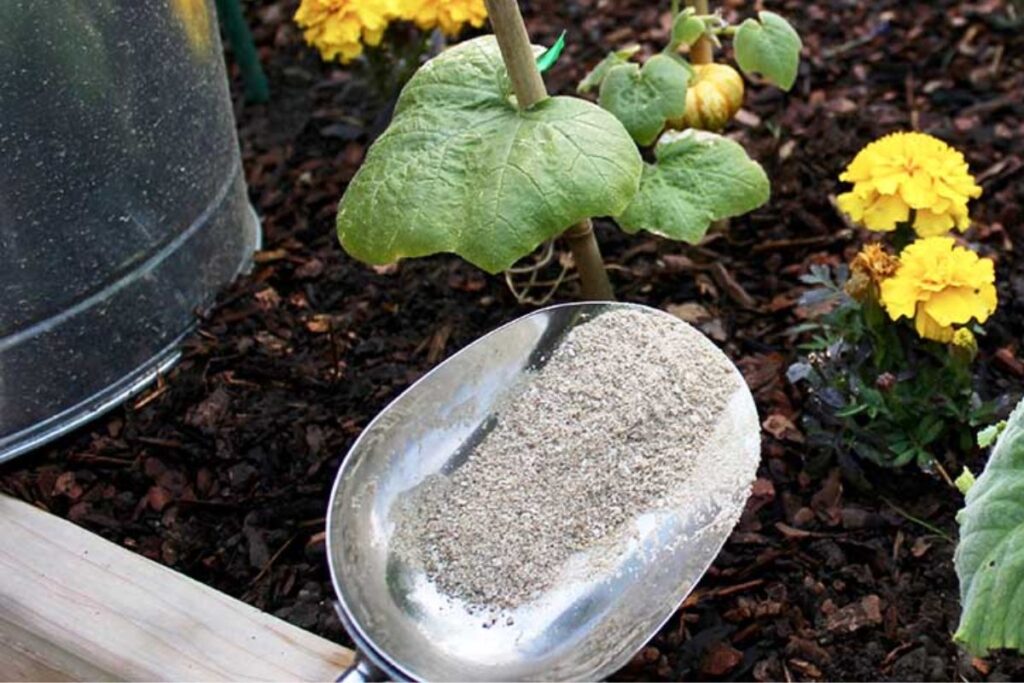
To maximize your pumpkin harvest, it’s crucial to use the right fertilization techniques, such as preparing and maintaining soil, composting with pumpkin scraps, using organic and synthetic fertilizers with proper timing and application, adjusting pH for optimal growth, and spacing plants appropriately.
Soil Preparation And Maintenance
To maximize your pumpkin harvest, proper soil preparation and maintenance are essential. Here are some tips to ensure that your pumpkin plants have the best growing environment:
- Test Soil pH: Before planting, test your soil’s pH level to ensure it falls between 6.0 and 7.5, which is ideal for pumpkins.
- Prepare the Soil: Clear the area of any weeds or debris, then remove rocks and break up clumps of soil to promote root growth.
- Add Organic Matter: Mix compost or well-rotted manure to improve soil structure and supply nutrients.
- Adjust Nutrient Levels: Based on soil test results, add any necessary nutrients such as nitrogen, phosphorus, and potassium using organic or synthetic fertilizers.
- Maintain Moisture Levels: Keep the soil evenly moist but not waterlogged by watering regularly or installing drip irrigation systems.
- Mulch: Apply mulch around the base of the pumpkin plants to conserve moisture and suppress weed growth.
Properly preparing and maintaining your soil will give your pumpkin plants the best chance for a bountiful harvest.
Composting With Pumpkin Scraps
Composting with pumpkin scraps is an excellent way to nourish your pumpkin plants and improve soil quality. Simply add the leftover pumpkins, including the flesh and seeds, to the compost bin and other organic matter such as leaves, grass clippings, and kitchen scraps.
By composting pumpkin scraps, you’re also reducing waste in your garden and promoting sustainability. Plus, it’s a great way to recycle Halloween decorations! Make sure to evenly mix the contents of your compost bin every few weeks for optimal decomposition.
Using Organic And Synthetic Fertilizers
To maximize your pumpkin harvest, it’s important to understand the benefits of using both organic and synthetic fertilizers. Organic fertilizers are made from natural sources such as compost, manure, and bone meal.
They release nutrients slowly over time and improve soil structure and quality.
While organic fertilizers are often preferred by gardeners who prioritize sustainability and eco-friendliness, they may not always provide the precise nutrient ratios that pumpkins need for optimal growth.
On the other hand, synthetic fertilizers can be tailored specifically to meet plant needs but may negatively impact soil health if overused.
Timing And Application Of Fertilizers
Applying fertilizers at the right time and in the correct manner is crucial for optimal pumpkin growth. Here are some tips on when and how to apply fertilizers:
- Apply fertilizer before planting: Incorporate balanced fertilizers, organic or commercial, such as 10-10-10 or 5-10-10 into the soil before planting pumpkins to ensure that your plants have a good start.
- Apply fertilizer during the growing season: Feed pumpkins with nitrogen-rich fertilizers, like manure or blood meal, when their vines begin to run. This will help to fuel their rapid growth.
- Apply fertilizer sparingly: Over-fertilizing pumpkins can lead to excessive foliage and poor fruit development. Use slow-release formulations and avoid applying too much of them.
- Apply fertilizer near the roots: Pumpkins absorb nutrients through their root systems, so apply fertilizers directly on the soil around them.
- Water after fertilization: Applying water after applying the necessary amount of fertilizer helps distribute it evenly throughout the soil and enhances nutrient uptake.
By following these tips for timing and applying fertilizers, you can maximize your pumpkin yield without damaging your plants.
PH Adjustments For Pumpkin Growth
Maintaining the correct pH level in your soil is crucial for optimal pumpkin growth. The ideal range for pumpkin plants is between 6.0 and 7.5 on the pH scale, which is slightly acidic to neutral.
To adjust your soil’s pH level, you can use amendments like agricultural lime to increase the pH and sulfur to decrease it. You should test your soil regularly using a kit available at most garden centers or by sending a sample of your soil away for analysis.
Related Reading:
- How To Fertilize Cucumber Plants For Your Best Harvest?
- Growing Eggplant And Cucumbers Together Companion Planting
- Top 8 Ways To Fertilize Your Tomato Plants For Best Harvest Yet
- How to Find, Prevent, and Treat Zucchini Plant Problems?
Conclusion
Utilizing the best fertilizer techniques can maximize your pumpkin harvest and help you enjoy a bountiful harvest this season. Understanding the importance of soil preparation, composting, and fertilizer application is crucial for planting healthy pumpkins with optimal nutrient absorption rates.
Implementing expert tips such as proper watering techniques and pest control measures will also help ensure a successful crop yield.

